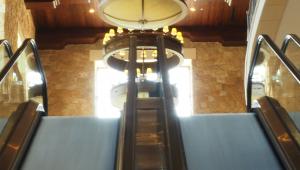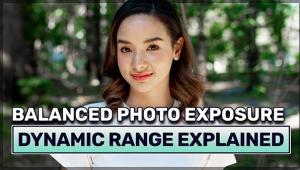photokina Special Coverage; New Lenses For 35mm And Digital SLR Cameras: The D-SLR Lens Ship Comes In Page 2
Lenses For Samsung D-SLRs
Now that Samsung is marketing three D-SLR cameras (with Pentax AF mount) the
company is increasing the number of new lenses for their system. Five new digital-only
products will be available by the time you read this: the 10-17mm f/3.5-4.5
ED fisheye, the Schneider 12-24mm f/4 ED AL ultra-wide, the wide angle 16-45mm
f/4 ED AL, and the Schneider 35mm f/2 AL, plus a Macro lens, the Schneider D-Xenon
100mm f/2.8. Although these models bear the Schneider-KREUZNACH or the Samsung
logo, all are similar to existing Pentax lenses in many respects. That's
not a complaint at all, since the comparable lenses are among some of the best
in the Pentax line, featuring ED (Extra low Dispersion) and/or AL (Aspherical)
elements and extensive multilayered coatings for flare control.
 |
 |
||
|
|
||
 |
|||
|
|||
Pentax Ultrasonic Series
Following a trend that is common in several other brands, Pentax will be manufacturing
some lenses with a fast/silent ultrasonic focus motor. Designated as the DA*
series, these lenses will be sealed to resist dust and water to match the similarly
sealed Pentax K10D. Do note, however, that the Ultrasonic series is compatible
only with the K10D (and presumably, with the Samsung Digimax GX-10) as well
as future cameras. The first group, to be available in March 2007, will include
the DA* 16-50mm f/2.8 ED AL [IF], DA* 50-135mm f/2.8 ED [IF], and the DA* 60-250mm
f/4 ED [IF]. Prices and specifications for these zooms were not yet available
at our press time, but they will be high-grade lenses as suggested by the wide
maximum apertures as well as the ED (Extra low Dispersion), AL (Aspherical),
and IF (Internal Focus) designations.
 |
 |
||
|
|
||
 |
|||
|
|||
Zeiss Lenses For Nikon
Expanding its line of Nikon manual focus (AIS) lenses, Zeiss has introduced
four new ZF-series models with high-grade T* multilayered coatings and all-metal
barrels. They are suitable for use with either 35mm or digital Nikon SLRs. However,
do note that most recent Nikon cameras disengage light metering unless an AF
or AI-P series lens is used; for compatibility with AI lenses, check the Nikon
web page for each specific D-SLR model. A wide angle duo, the Zeiss Distagon
T* 25mm f/2.8 ZF and 35mm f/2 ZF ($824, each, list) are said to provide exceptional
image quality.
The other two Zeiss products are macro lenses, with a maximum magnification
of 0.5x, boasting incredibly wide maximum apertures, ideal for low-light focusing
and shooting. The Makro-Planar T* 50mm f/2 ZF ($1124, list) employs a "floating
element" optical system intended for very high image quality over the
entire focusing range. And the 100mm f/2 ZF ($1749, list) features an optical
design originally developed for a "cine" lens for optimal image
quality even at f/2. Zeiss does not publish specifics about the types of glass
employed, but historically, the company has had an enviable reputation for superior
optical quality.
 |
 |
||
|
|
All-Purpose Zooms
Back when most of us were shooting with 35mm SLR cameras, the 28-200mm and 28-300mm
zooms were the best sellers in many brands. Now that D-SLR cameras are far more
popular, the 18-200mm zooms have become more common. But Tamron has gone a step
beyond those models with the new digital-only AF18-250mm F/3.5-6.3 Di-II LD
Aspherical (IF) Macro lens, a compact (62mm filter size) lightweight (15.2 oz)
that's ideal when you want to carry only a single lens. Although the price
will fall into the affordable category (price not yet set) this zoom is loaded
with great features: an LD (Low Dispersion) and an AD (Anomalous Dispersion)
element to control aberrations, close focusing to 17.7" at all focal lengths
plus multilayered coatings. (Available mounts: Canon, Nikon D, Pentax, and Sony/Maxxum.)
Sigma's new 18-200mm f/3.5-6.3 DC OS digital-only zoom is particularly
desirable because it incorporates an Optical Image Stabilizer that compensates
for the effects of camera shake. This device allows for shooting at longer shutter
speeds without a tripod, with less need to use high ISO levels that can degrade
image quality. Two pieces of SLD (Special Low Dispersion) glass plus two hybrid
aspherical lenses should provide fine image quality with this compact (62mm
filter size) and relatively lightweight (14.3 oz) zoom. The use of new multilayered
coatings is said to reduce flare and ghosting, a common problem with D-SLR's
highly reflective sensors, while providing optimum color balance. (Available
mounts: Canon, Sigma, Nikon, and Pentax.)
 |
 |
||
|
|
||
 |
 |
||
|
|
- Log in or register to post comments

































